News
The guide to air source heat pumps for hot tubs & swim spas
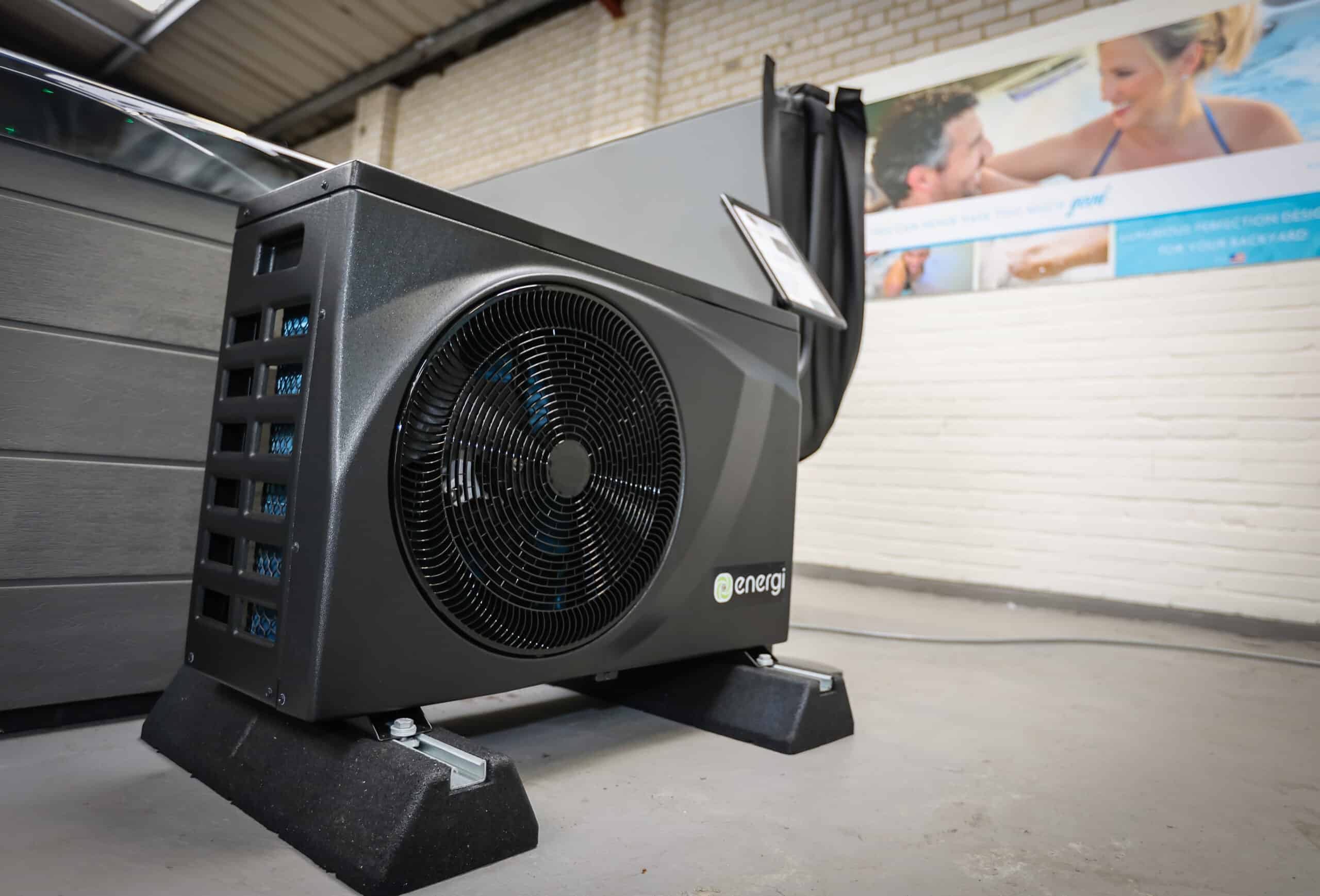
What is an air source heat pump?
Believe it or not, there is energy stored within the air around us, all the way down to a temperature of -273ºc! An air source heat pump or ASHP for short, captures this heat within the air and uses it to heat something else. They are increasingly being used in our homes to heat our baths, showers and under-floor heating and now there are air source heat pumps for hot tubs too!
They are popular because of their efficiency; an ASHP will generate more heat than it consumes, making them a top choice for people looking to reduce their energy costs and carbon footprint.
How does an air source heat pump work?
An air source heat pump uses a very clever, but simple process.
- A fan draws the surrounding air into the unit.
- The air passes over an evaporator (looks like a car radiator) which transfers the heat from the air, into a refrigerant that is passing through inbuilt pipework. The refrigerant turns from a liquid into a gas during the process.
- The now-warm refrigerant is passed through a compressor which generates even more heat by squeezing the gas.
- The now-very-hot refrigerant gas passes through a heat exchanger, where the warmth is transferred to water flowing through the unit. It’s important to note that the water and refrigerant never mix, they just pass very closely to each other.
- The final journey for the refrigerant is through an expansion valve, which allows the refrigerant to return to a liquid and start the process all over again in one continuous cycle.
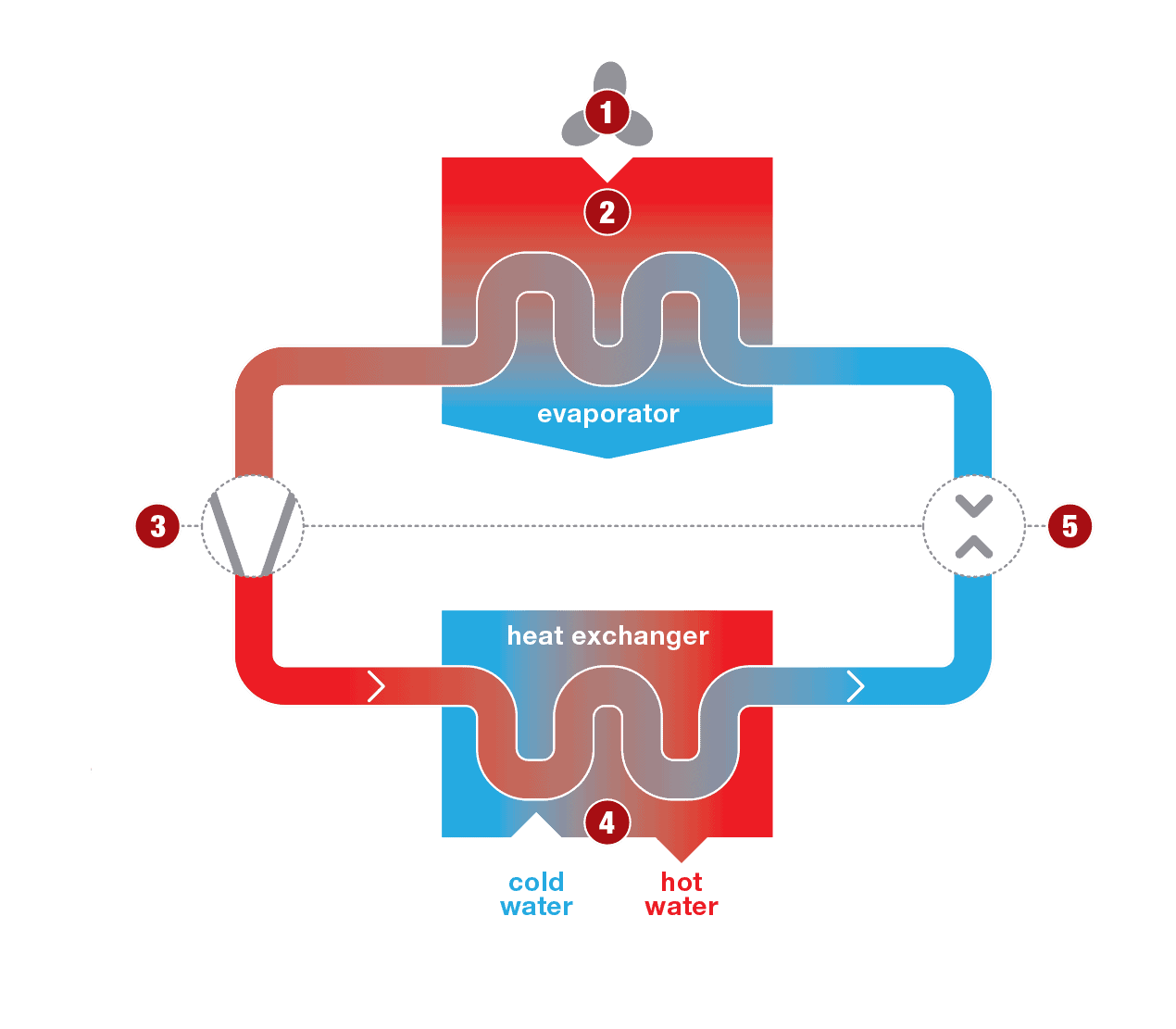
Types of hot tub air source heat pump
There are three main types of heat pump available for a spa, with each having varying levels of efficiency.
- On/Off – This type of heat pump is either off or on and working at maximum power, there is no in-between. These units will still save you money, but not as much as other types. They also tend to be suitable for warmer temperatures and may not be suitable for the depths of winter.
- Stepped inverter – These units have varying stages or ‘steps’ to their power. For example you may have levels of 25, 50, 75 % 100% power. Normally the unit itself will decide on which power level to use based on the current demand for heat.
- Full inverter – These units sit at the top of the tree and offer the highest levels of efficiency. They are often the units capable of operating in the coldest of conditions, with some able to work down to -15ºc ! These heat pumps are able to regulate their power anywhere from 0 to 100%, meaning they are never working harder than they need to, this also makes them the quietest of all three designs.
What benefits are there to using an air source heat pump on a hot tub or swim spa?
- The biggest benefit to an air source heat pump is using far less energy to heat the spas water, compared to factory-fitted heater.
- ASHP are able to heat the water far faster – this is great news for holiday let owners who need to change a spas water quickly ready for new guests.
- Some heat pump are even able to cool the water down, ideal for a cooling dip in mid summer!
How much money will a heat pump save me on my hot tubs running costs?
Firstly its worth noting that this is a completley variable answer and depends on factors such as:
- The size of your hot tub and how well its insulated
- The size, quality and efficiency (COP) of the heat pump being used
- The air temperature, as heat pumps are more efficient the warmer the air, as covered in more detail below.
However, it is widely acknowledged that a good-quality heat pump can reduce your running costs by 50%, with some people experiencing even larger savings of 70-80%.
Example savings of using a heat pump on a hot tub.
A controlled test has been undertaken by Superior Wellness on a Oceanus hot tub. They tested the same hot tub without using an air source heat pump and then with an air source heat pump.
This was for a 72 hour test period, with a one-hour filter cycle. The water temperature was 39 degrees centigrade and the average outside air temperature was 16 degrees centigrade.
The test was in accordance with the CEC guidelines (California Energy Commission).
The results below are for the 72 hour test period.
How much energy will a hot tub use per day?
The test results per day from the 72 hour test for the energy usage were as follows:
Hot Tub with Air Source Heat Pump – 3.36 kWh
Hot Tub with no Air Source Heat Pump – 6.96 kWh
How much will it cost to run a hot tub per day?
If you are using an Air Source Heat Pump to heat a hot tub it will generate a considerable saving. The figures below show the cost per day following the 72 hour test we conducted. These figures are based on a unit cost of 23.5p per kWh.
Hot Tub with Air Source Heat Pump – £0.79 a day
Hot Tub without Air Source Heat Pump – £1.63 a day
From the results we can say that by using an Air Source Heat Pump you can save approximately 50% on energy bills and energy usage. The costs will vary depending on the hot tub, your energy tariff, how much you use your hot tub and your filter cycle.
Understanding the efficiency of an ASHP
You would be forgiven for thinking that the heat pump process sounds very energy-intensive, but in fact the complete opposite is true!
The heater built into your spa will be either a 2 or 3kW unit, just like you might find in a kettle. For a 3kW heater, we must input 3kW of electricity and in return we will receive 3kW of heat. The ratio is 1:1 or in heat pump terms we would say the coefficient of performance or COP is 1.
When looking at a heat pump, this COP figure tells you how efficient the unit is at a given temperature. For example, when you look at the capacity to generate heat at an air temperature of 26ºc (example data below), the COP is up to 12.5 This means for every 1 unit of electricity that goes into the unit, we can get up to 12.5 units of heat out, a near 1:13 ratio. This as you can tell is far beyond the 1:1 ration of the inbuilt heater.
Heating Capacity at Air 26℃
Heating Capacity (kW): 2.75 ~ 6.84
Power Input (kW): 0.22 ~ 1.18
COP: 12.5 ~ 5.78
Arctic Action 7kW heat pump data
At cooler temperatures, it stands to reason that there is less heat available in the air and therefore the COP figure will be lower.
It’s important to note that not all heat pumps are able to work in lower temperatures and that many of the least expensive units do not function below 10ºc, making them useless in our climate. The Arctic Action heat pump we offer is capable of extracting heat from the air as low as -20ºc, making it a true year-round model that is perfect for the UK.
What hot tubs will an air source heat pump fit?
At Hyperion Hot Tubs, we are currently only fitting heat pumps to hot tubs that we have sold; this is so we can guarantee the performance of the product and that the performance of your hot tub is not reduced. Many of the latest models are coming through heat-pump-ready, thanks to some extra pipework inside. However if your spa is not heat pump ready, its often possible to carry out some simple modifications to allow the fitting of a heat pump. We have taken great care in understanding excatly how to fit these units without detiment to the existing spas performance and reliability.
If you are an existing customer, don’t worry, there’s a 99% chance we can fit a unit to your spa very easily and we will happily discuss this work with you if you are interested in finding out more.
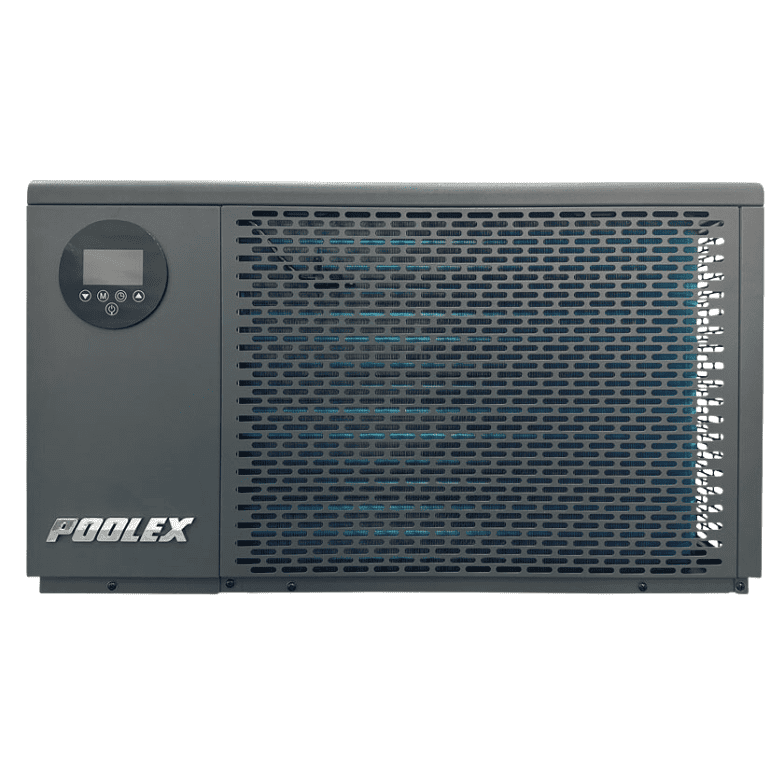
This Poolex Arctic Action 7kW is a great example of a full inverter air source heat pump, capable of working down to -20ºc.
With a COP of up to 12.5 this unit has the ability to drastically reduce the energy consumed in heating a hot tub or swim spa.
Its unique shape and the way that it discharges air lengthways makes it a brilliant unit for use on a hot tub, unabling positioning of the unit in areas that traditional designs cannot be used effectively.
Does the heat pump replace the hot tubs built-in heater?
In the majority of cases, yes. There is no need to physically remove the spas built-in heater and doing so would actually be counter-productive. The built-in heater contains sensors which are important to the correct functioning of the spa, so all that is required is to disconnect the cable that supplies the heating element itself with power.
That said, there are heat pumps that work in unison with the built-in heater, allowing both to be used at the same time. This can be of two benefits, firstly it can allow a smaller less expensive unit to operate year round in very low temperatures, secondly it can aid in faster heat up times for holiday lets.
Where does the heat pump physically go?
Your air source heat pump requires a continuous supply of fresh warm air, so that is the first consideration. If you were to place it inside a shed for example, it would be feeding off the same air all the time, the shed would get colder and colder until the ASHP can no longer work as there is no more heat left to extract.
Therefore we need to position the pump so that it can draw in fresh air and blow out the chilled air in a direction where it will not be recycled. This normally means around 300-500mm of clear space behind the unit and 2500mm to the front.
There will be a small amount of pipework linking the hot tub and heat pump to allow the flow of water between the two, therefore you would not want to position the units too far apart so as to reduce unnecessary heat loss.
Where will the heat pump take its power from?
In most instances we are able to connect the heat pump up in such a way that it draws power from the hot tub, meaning no extra power supply is needed. Though there may be occasions where there is a need to draw power from a separate supply and we would discuss this with you beforehand.
Still have questions?
If you still have some questions left unanswered, please head over to our contact us page and we will be happy to help. Alternatively, if you are sold on the concept and wish to know more about the Poolex heat pumps mentioned in this article, check it out here.
Air source heat pumps for hot tubs – Check out our range!
-
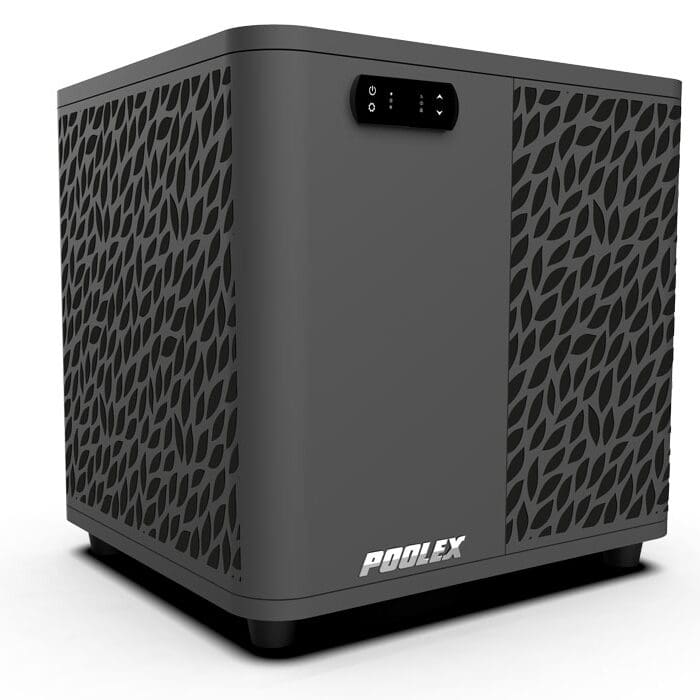 O’Spa 5kW Air source Heat Pump£1,499.00
O’Spa 5kW Air source Heat Pump£1,499.00 -
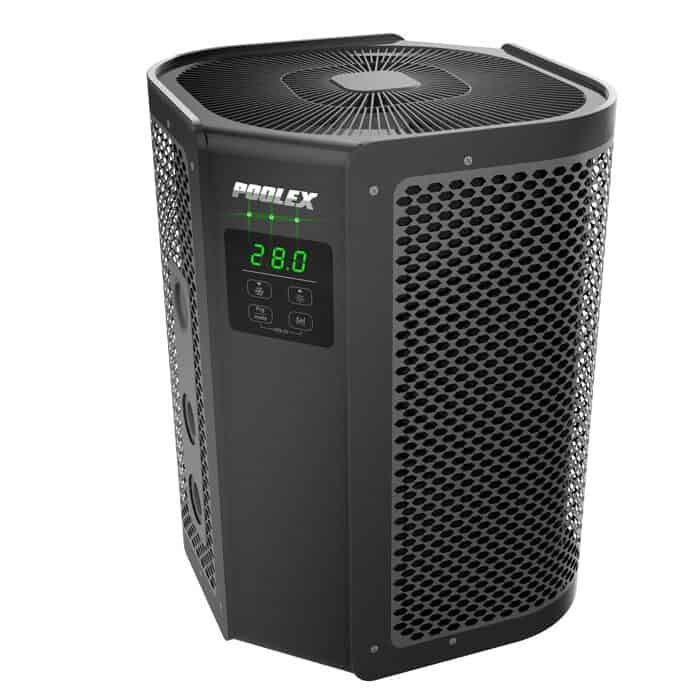 Vertigo Fi 75 Air Source Heat Pump£2,699.00
Vertigo Fi 75 Air Source Heat Pump£2,699.00

One thought on “The guide to air source heat pumps for hot tubs & swim spas”
Comments are closed.